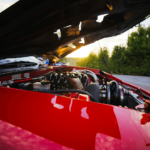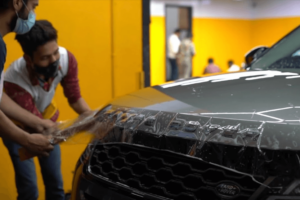Ricer cars are a term used to describe heavily modified vehicles that feature cosmetic enhancements to make them look faster and stand out from the crowd.
The term “ricer” is derived from the acronym “RICE,” which stands for “Race-Inspired Cosmetic Enhancements.” These modifications are strictly for aesthetic purposes and do not necessarily improve the car’s performance.
While some people view ricer cars as a form of automotive art, others consider them to be a tacky and tasteless representation of car culture.
The majority of ricer cars are typically low-end vehicles like Honda Civics or Toyota Corollas that have been modified to look like high-performance vehicles.However, not all ricer cars are slow; some have been modified to enhance their performance capabilities.
Despite the mixed opinions surrounding ricer cars, the subculture has gained a significant following over the years. Whether you love them or hate them, ricer cars have become a staple in the automotive world and continue to evolve with each passing year.
Understanding Ricer Cars
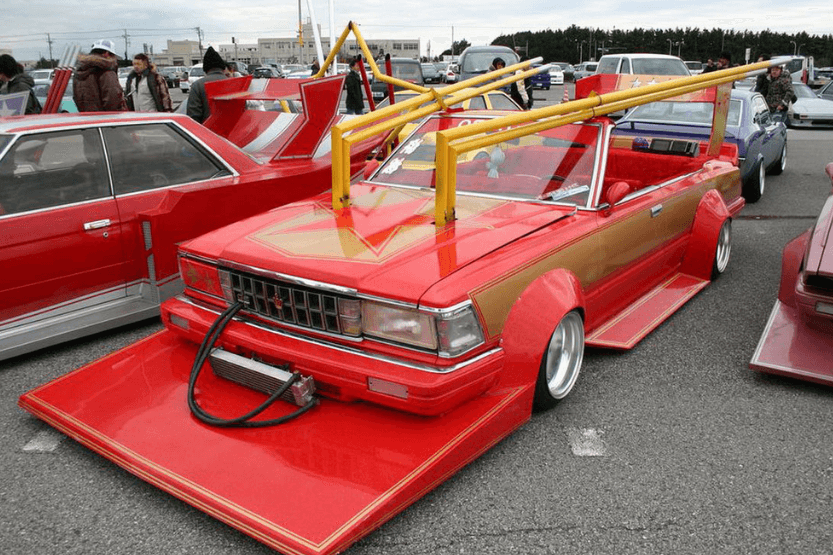
As per CARHP (.com), ricer cars are a type of car that has been modified to look like a high-performance vehicle. The term “ricer” comes from the acronym RICE, which stands for Race-Inspired Cosmetic Enhancement.
These cars are often modified in a brash and showy way, and their owners typically add oversized spoilers, neon lights, and other modifications that are more for show than for actual performance improvements.
The origins of ricer cars are rooted in Japanese automotive culture, where car enthusiasts would customize their cars in unique and out-of-the-box ways.
However, the term has taken on a somewhat pejorative connotation in recent years, with some people using it as a derogatory term to describe cheap cars manufactured mainly by Asian carmakers that have been modified in a tacky way.
Ricer cars are often criticized for their lack of performance improvements despite their flashy modifications. While some owners may make genuine performance upgrades to their cars, many ricer cars are more bark than bite.
They may have loud exhaust systems, but they lack the engine upgrades and other modifications necessary to actually improve their performance on the road.
It’s important to note that not all modified Asian cars are ricer cars. The term is specific to cars that have been modified in a certain way, with a focus on cosmetic enhancements rather than genuine performance improvements.
Some car enthusiasts take pride in their ricer cars and enjoy the attention they receive, while others see them as tacky and unappealing.
Overall, ricer cars are a unique subculture within the automotive world, with their own set of customs, aesthetics, and values. While they may not appeal to everyone, they represent a form of self-expression and creativity that is important to many car enthusiasts.
Historical Context
The term “ricer car” is a pejorative term that originated in the early 2000s and was used to describe cheap Asian-made cars that were modified in a brash and showy way.
The term has its roots in the Japanese motorcycle industry during World War II, where Japanese bikes were known for their high fuel economy, leading many Americans to refer to them as “rice burners” at the time. Over time, the term expanded to include Japanese cars and any East Asian-made vehicles.
Honda, Toyota, Chevrolet, and Dodge are some of the car manufacturers that have been associated with ricer cars. However, it is important to note that not all of their cars fall under this category.
The term is mainly used to describe modified versions of some of their models, such as the Honda Civic, Toyota Corolla, and Chevrolet Cavalier.
The Nissan Skyline, Toyota Supra, and Porsche 911 are some of the high-performance cars that have been modified in a ricer style. These cars are often modified with oversized wings, neon lights, and other flashy modifications that do not necessarily improve their performance.
The Subaru WRX is a popular car among enthusiasts and has been modified in a ricer style. However, it is important to note that not all WRX owners modify their cars in this way.
The WRX is known for its performance capabilities, and many owners focus on improving its performance rather than its appearance.
JDM cars, or Japanese Domestic Market cars, are also often associated with ricer cars. These cars are popular among enthusiasts because of their unique features and performance capabilities. However, like with any other car, they can be modified in a ricer style.
In summary, the term “ricer car” originated from the Japanese motorcycle industry during World War II and expanded to include Japanese cars and any East Asian-made vehicles.
While Honda, Toyota, Chevrolet, and Dodge are some of the car manufacturers associated with ricer cars, not all of their cars fall under this category.
High-performance cars like the Nissan Skyline, Toyota Supra, and Porsche 911 have also been modified in a ricer style. JDM cars are also often associated with ricer cars, but not all JDM cars are modified in this way.
Common Features of Ricer Cars
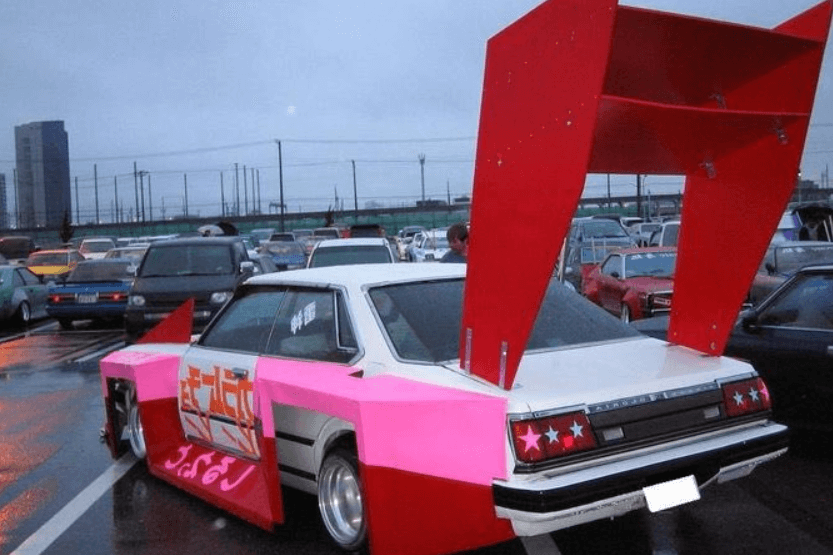
Ricer cars are known for their race-inspired cosmetic enhancements that make them look like race cars, but they are not.
These modifications are mostly focused on the exterior of the car, and they are meant to enhance the car’s appearance rather than performance. As per Car from Japan (.com), here are some common features of ricer cars:
Body Kits
Body kits are one of the most common cosmetic enhancements on ricer cars. These kits are designed to make the car look lower, wider, and more aggressive.
They come in a variety of styles and designs, and they can be made from different materials such as fiberglass, carbon fiber, or polyurethane. Some ricer cars have wide body kits that make them look more muscular and powerful.
Lights
Lights are another popular cosmetic enhancement on ricer cars. These cars often have LED lights installed in various parts of the car, including the headlights, taillights, and interior. Some ricer cars have spoiler lights that are mounted on the rear spoiler to enhance the car’s appearance.
Paint and Stickers
Ricer cars often have custom paint jobs and stickers that make them stand out. The paint job can be a solid color or a combination of colors, and it can have different designs and patterns. Stickers are also a popular addition to ricer cars, and they can be placed anywhere on the car.
Wings and Spoilers
Wings and spoilers are another common feature of ricer cars. These are designed to improve the car’s aerodynamics and give it a more aggressive look. Some ricer cars have vertical doors that open upwards instead of outwards, which adds to their unique appearance.
Fenders
Fenders are another cosmetic enhancement that is common on ricer cars. These are designed to make the car look wider and more muscular. Some ricer cars have flared fenders that are wider than the stock fenders, which gives them a more aggressive stance.
Conclusion
These are just some of the common features of ricer cars. While these modifications are mostly focused on the exterior of the car, they can still make the car look more aggressive and powerful.
However, it’s important to note that these modifications do not necessarily improve the car’s performance.
Types of Modifications
Ricer cars are heavily modified vehicles that are often altered for cosmetic purposes rather than practicality or performance. Here are some of the most common types of modifications that ricers make to their cars:
Cosmetic Modifications
Cosmetic modifications are the most common type of modification made to ricer cars. These modifications are designed to change the appearance of the car and make it stand out from the crowd. Some of the most popular cosmetic modifications include:
- Body kits: These are aftermarket parts that are added to the exterior of the car to change its appearance. Body kits can include new bumpers, side skirts, and spoilers.
- Paint jobs: Ricers often paint their cars in bright colors or add graphics and decals to make them more eye-catching.
- Wheels: Upgrading the wheels is another common cosmetic modification. Ricers often add large, flashy rims to their cars to make them look more aggressive.
Basic Modifications
Basic modifications are changes that are made to improve the car’s performance or handling. These modifications are often practical and can make the car more fun to drive. Some of the most common basic modifications include:
- Suspension upgrades: Ricers often lower their cars or add stiffer springs to improve handling and reduce body roll.
- Exhaust systems: Upgrading the exhaust can improve the car’s performance and give it a more aggressive sound.
- Air intake systems: Ricers often install aftermarket air intake systems to improve the car’s airflow and increase horsepower.
Interior Modifications
Interior modifications are changes that are made to the inside of the car to make it more comfortable or functional. Some of the most popular interior modifications include:
- Audio systems: Ricers often install high-end audio systems with subwoofers and amplifiers to improve the sound quality in their cars.
- Seats: Upgrading the seats can make the car more comfortable and supportive, especially during high-performance driving.
- Gauges: Ricers often add aftermarket gauges to monitor engine performance and other vital statistics.
Overall, ricer cars are heavily modified vehicles that are often altered for cosmetic purposes rather than practicality or performance. While some modifications can improve the car’s handling or performance, many are purely cosmetic and are designed to make the car stand out from the crowd.
Popular Models for Modification

Ricer cars are often modified versions of popular models. Some of the most popular models for modification include the Honda Civic, NSX, Nissan Skyline, Toyota Supra, Toyota Corolla, Nissan Skyline GTR, Porsche 911, and Subaru WRX.
The Honda Civic is a popular choice for modification because of its affordability and availability of aftermarket parts. It is often modified for street racing and drag racing.
The NSX is another popular Honda model that is often modified for performance. It is a high-performance sports car that is known for its handling and speed.
The Nissan Skyline is a popular model for modification because of its powerful engine and sleek design.
The Skyline GTR is a particularly popular version of the car that is often modified for racing. The Toyota Supra is another popular model for modification. It is a high-performance sports car that is known for its speed and handling.
The Toyota Corolla is a popular model for modification because of its affordability and availability of aftermarket parts. It is often modified for street racing and drifting. The Porsche 911 is a popular high-end sports car that is often modified for performance. It is known for its speed and handling.
Finally, the Subaru WRX is a popular model for modification because of its all-wheel drive system and turbocharged engine. It is often modified for rally racing and street racing.
Overall, these popular models for modification offer a wide range of options for car enthusiasts looking to upgrade their vehicles for performance, speed, and style.
Accessories and Add-Ons
Ricer cars are known for their flashy and often unnecessary accessories and add-ons. These modifications are typically added to make the car look faster or more aggressive, but they often do not actually improve the car’s performance.
Here are some of the most common accessories and add-ons found on ricer cars:
Spoilers
Spoilers are a popular accessory on ricer cars. They are typically mounted on the rear of the car and are designed to improve aerodynamics and provide downforce at high speeds. However, many ricer cars have oversized or poorly designed spoilers that do not actually improve the car’s performance.
Alloy Wheels
Alloy wheels are another popular accessory on ricer cars. They are designed to be lighter and stronger than traditional steel wheels, which can improve the car’s performance. However, many ricer cars have oversized or poorly designed alloy wheels that do not actually improve the car’s performance.
Bumpers
Bumpers are often modified on ricer cars to improve the car’s appearance. This can include adding bumper lips, rear diffusers, and other accessories. However, these modifications often do not actually improve the car’s performance.
Exhaust Systems
Exhaust systems are often modified on ricer cars to improve the car’s sound and appearance. This can include adding aftermarket exhaust tips, mufflers, and other accessories. However, these modifications often do not actually improve the car’s performance.
Other Accessories
Ricer cars often have a variety of other accessories and add-ons, such as intercoolers, spacer kits, and rear wings. While some of these modifications can improve the car’s performance, many are purely cosmetic and do not actually improve the car’s speed or handling.
In summary, ricer cars are known for their flashy and often unnecessary accessories and add-ons. While some of these modifications can improve the car’s performance, many are purely cosmetic and do not actually improve the car’s speed or handling.
Ricer Cars in Popular Culture
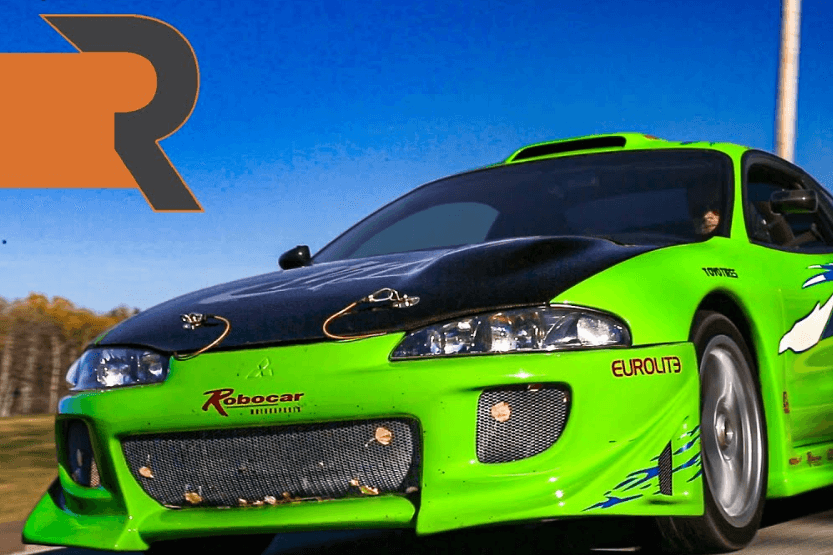
Ricer cars have become a popular topic in movies, TV shows, and online forums. They are often associated with street racing and car culture. Here are a few examples of ricer cars in popular culture:
Movies
The “Fast and Furious” franchise is perhaps the most well-known movie series that features ricer cars. The movies showcase a variety of modified cars, including Honda Civics, Mitsubishi Eclipses, and Nissan Skylines.
These cars are often equipped with oversized spoilers, aftermarket exhaust systems, and flashy paint jobs.
Other movies that feature ricer cars include “The Transporter,” “Gone in 60 Seconds,” and “The Italian Job.” In these movies, ricer cars are often used as getaway vehicles or for high-speed chases.
TV Shows
TV shows like “Pimp My Ride” and “Overhaulin'” have also contributed to the popularity of ricer cars. These shows feature car enthusiasts who transform old, beat-up vehicles into sleek, high-performance machines.
In addition, ricer cars have made appearances in popular TV shows like “Top Gear” and “MythBusters.” These shows often feature challenges that involve modifying cars to perform specific tasks or tests.
Actors
Some actors are known for their love of ricer cars. For example, actor Paul Walker, who starred in several “Fast and Furious” movies, owned a collection of high-performance cars, including a Nissan Skyline and a Toyota Supra.
Other actors who are known for their love of cars include Jay Leno, who has a massive collection of classic and modern cars, and Tim Allen, who has a passion for muscle cars and hot rods.
Overall, ricer cars have become a prominent part of popular culture. While some people view them as tacky or over-the-top, others see them as a way to express their love of cars and racing.
In Closing
In conclusion, ricer cars have become a popular trend in the automotive industry. While some people may find them attractive, others may not appreciate the modifications that have been made to these cars.
It is important to note that not all modified cars are ricers. Some modifications can actually improve the performance of a car, while others may simply enhance the aesthetics. However, when modifications are made to a car that do not improve its performance, it is often considered a ricer.
Ricer cars may look flashy and expensive, but they often lack the performance to back up their appearance. It is important to remember that a car’s performance is not solely based on its appearance, but also on the quality of its engine, transmission, suspension, and other mechanical components.
Ultimately, it is up to the individual to decide whether or not they appreciate ricer cars. However, it is important to remember that modifications should be made with a purpose and should not compromise the safety or performance of the vehicle.




